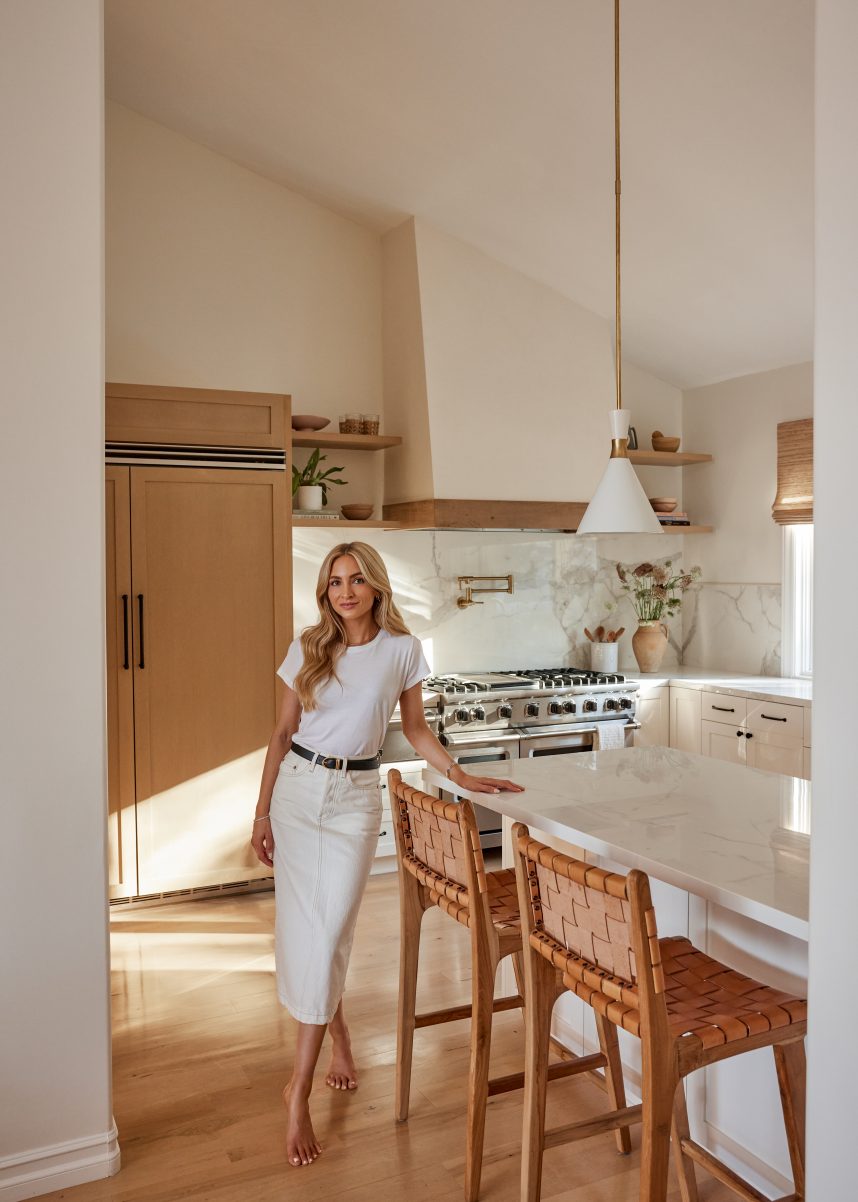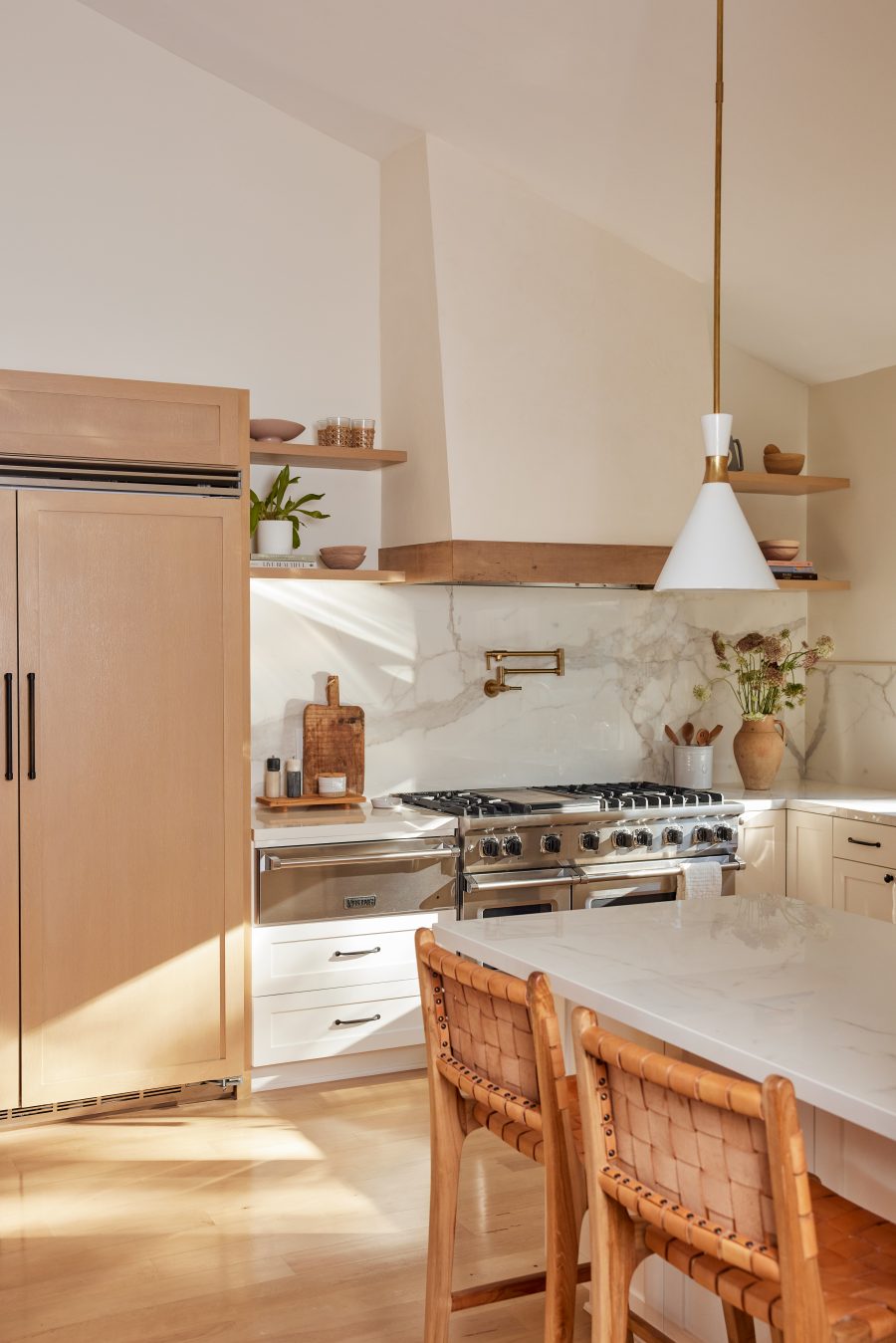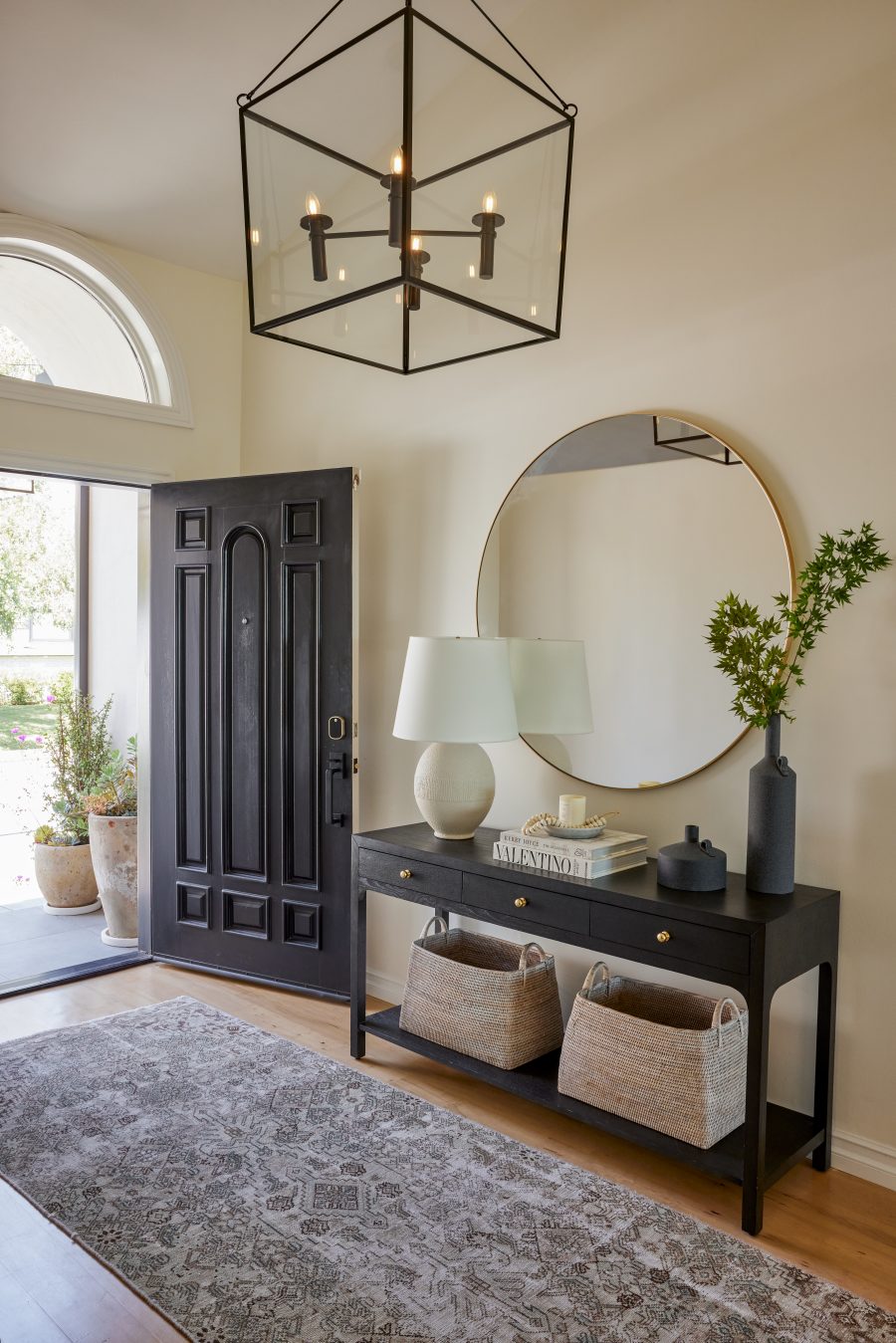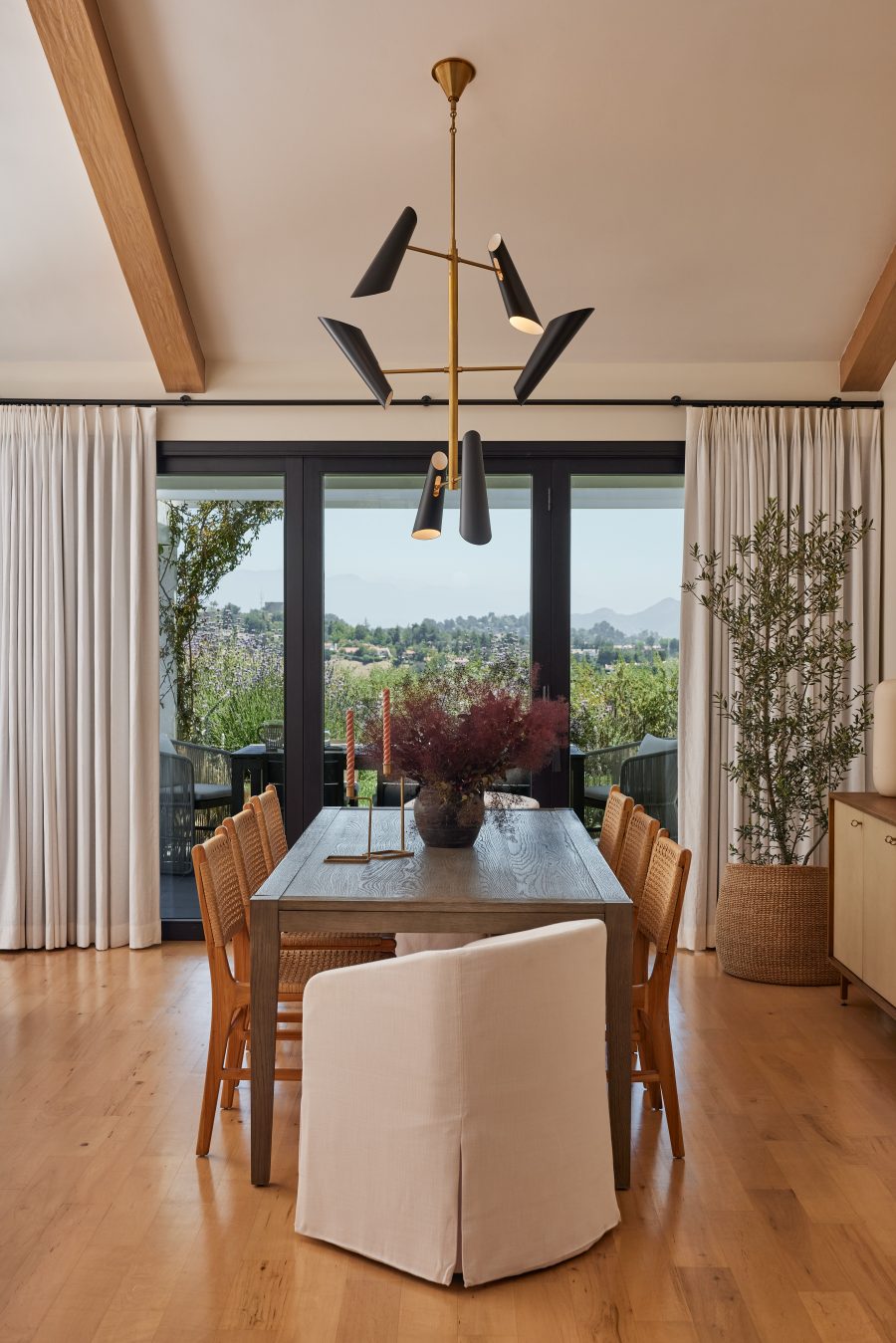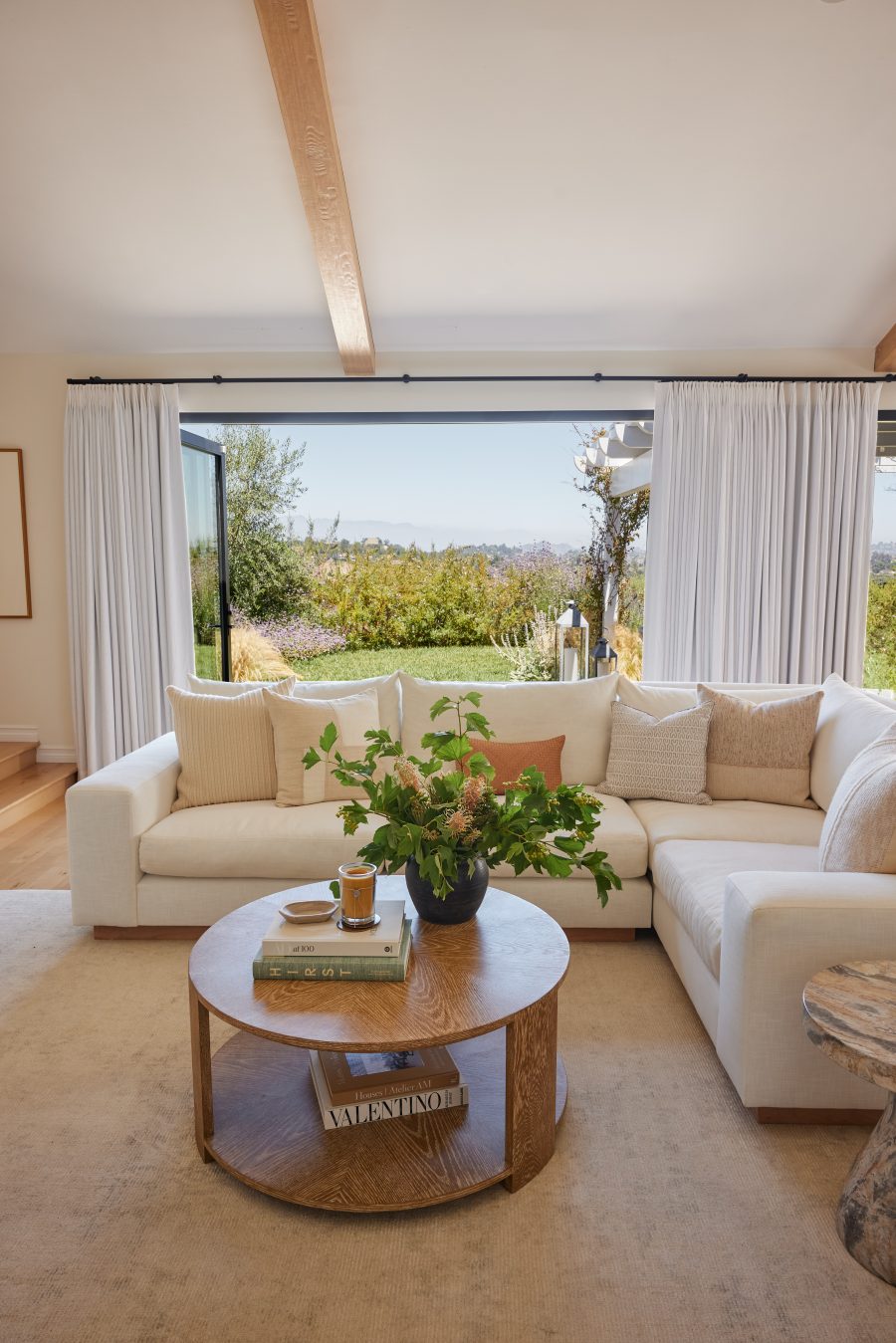A few mistakes & lessons learned along the way…
It’s been four years since gut renovated our cozy house in the hills and moved in, and sometimes I forget what it used to look like (does anyone remember the original closed off kitchen, and dare I say, the giant fish tank in the living room?!)
This was our first home purchased together and Christophe and I learned so much about the home buying and renovation process. I probably wouldn’t have attempted such a big renovation without him – his father was in real estate growing up and their family constantly moved around redoing homes, so thankfully he had some prior experience.
Regardless, of course we made a few mistakes along the way and learned a lot of lessons I can share. I’m honestly excited to do it again in the next 5-10 years (as while we’re in no rush to leave and love our home so much, I don’t think this is our long-term home). So, here are ten lessons we learned during this process…
1. Don’t forget about landscaping
Landscaping makes a HUGE difference – it really elevates a home and makes it look expensive and lush. When I walk by neighborhood homes and see them side by side, even if two homes are of same size, shape and quality, if one has beautiful landscaping, florals and trees my eye instantly goes there. So many friends tell us they love spending time outside in our backyard and how the garden creates such a welcoming feeling. However, prior to renovating I had no clue how much it could cost (who knew irrigation and drainage could be so expensive?)
Landscaping needs to be a part of the overall budget and not an afterthought at the end when funds have dwindled. I’d honestly almost cut things in the house if needed, in order to make sure landscaping is decent.
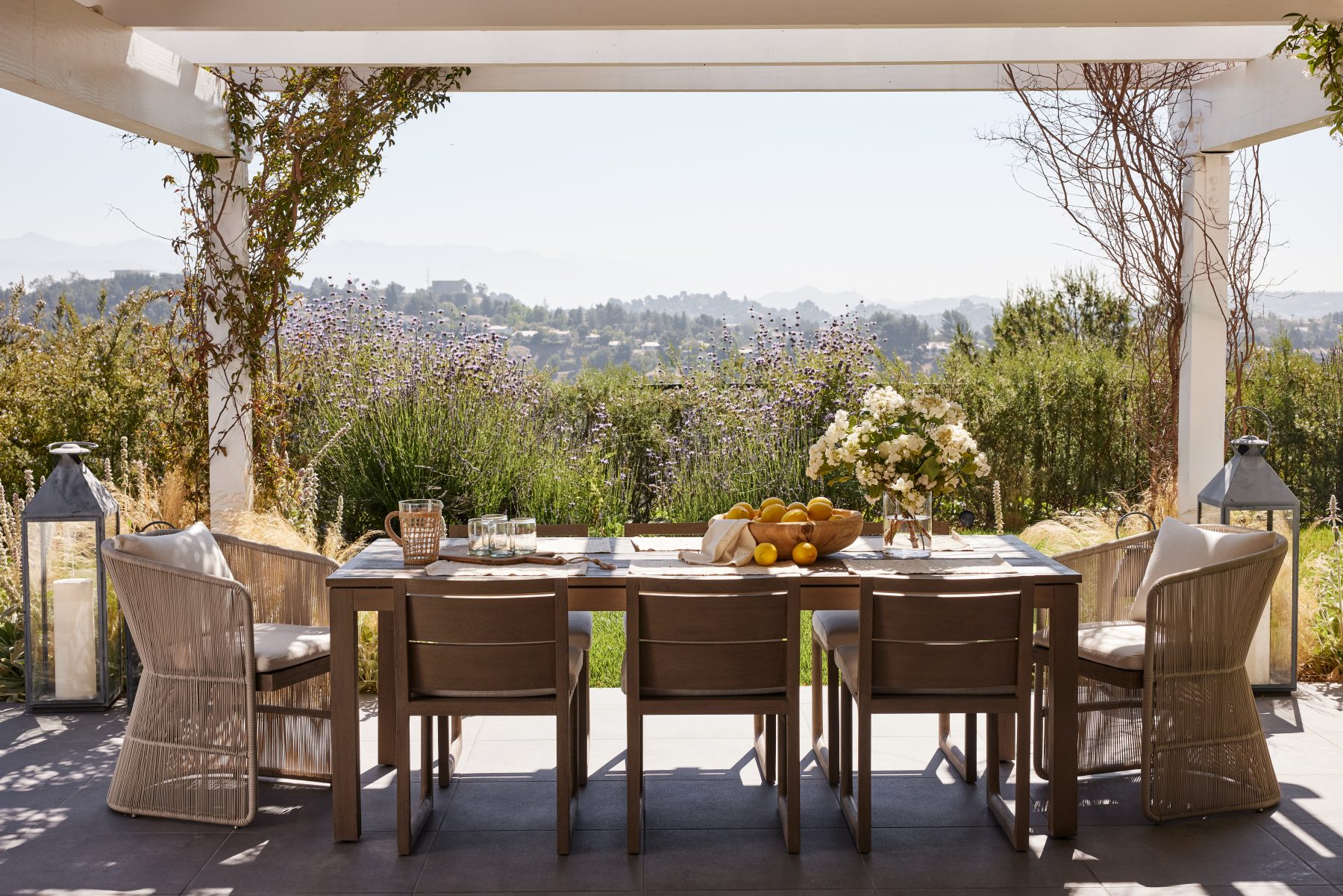
2. Paint can do wonders…
… and it’s a relatively inexpensive thing. I was surprised how fresh and clean the house looked with a new coat of paint that I reconsidered adding things I thought were necessary. For example, our big staircase leading up to my office used to be the same color as our floors (a dark, reddish brown maple wood) and because the posts are wide, I felt it weighed the room down. I wanted to replace it with a pretty, modern Spanish vibe iron staircase ($$$). However, once we painted it white, I reconsidered – new paint colors really give new life! This was also the case with our fence in the backyard and garage – all things I wanted to replace, but reconsidered with a fresh paint coat.
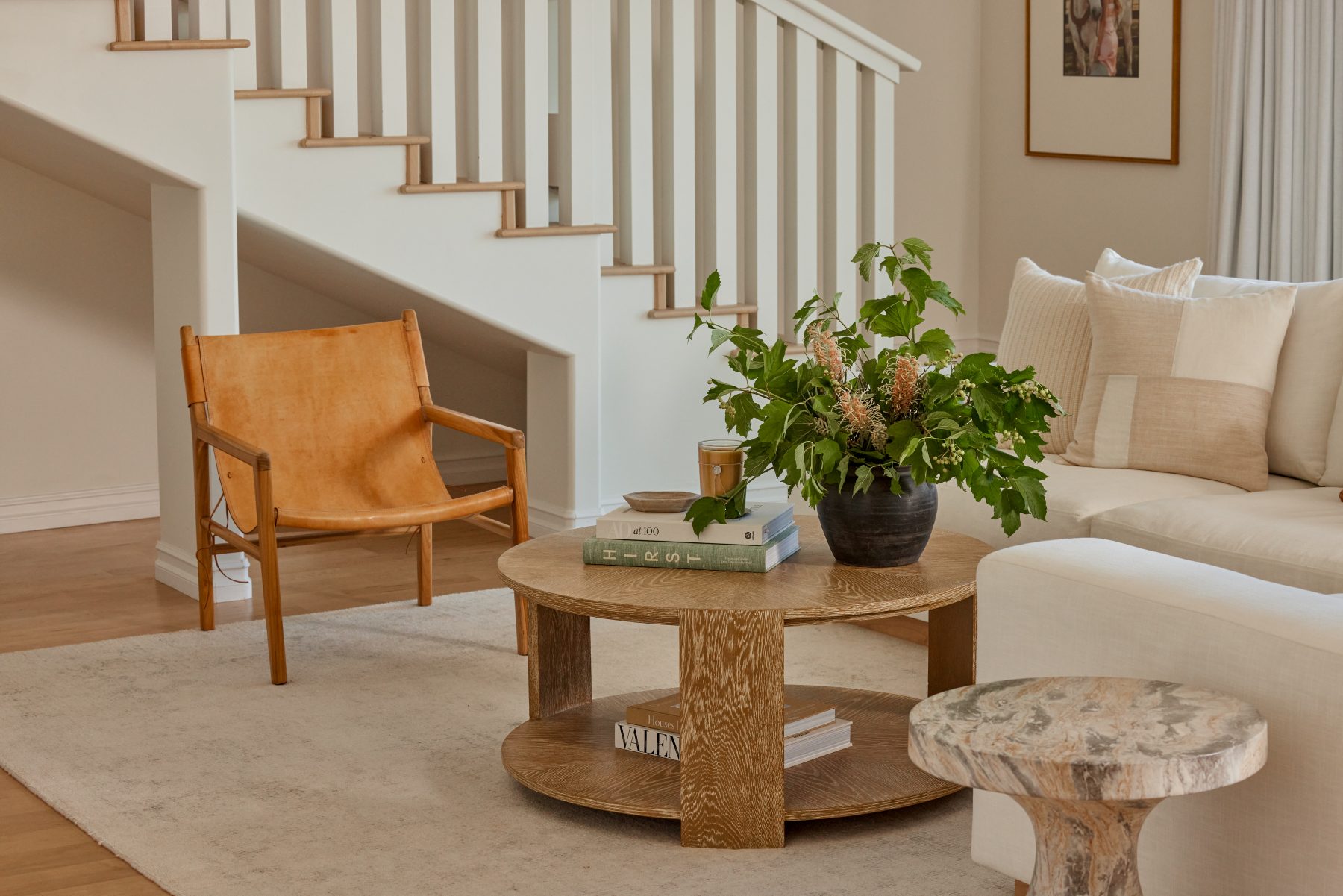
3. If you love something of a brand name, look for alternatives
For example, our outdoor sconces were found on Amazon after I wanted a pretty identical version from Visual Comfort, and our designer Suzy was impressed with the quality for the price! Outdoor fixtures get a little beat up quicker due to the elements and it just didn’t seem necessary to drop another $10k on them (considering how many were needed around the whole exterior). Instead we spent on the interior fixtures (our kitchen hanging lights, and big pendant in the entry are from Visual Comfort).
4. Be careful about over improving based on the overall house value and how long you intend to stay there
Is it a remodel, a temporary home, or a forever home? Christophe taught me that there are diminishing returns the more you spend on over improving to perfection – at some point, you may not get your money back in resale, or it just may not be worth it if you’re only there a few years. For example, we could have used more marble everywhere (and trust me, I wanted to!) replaced our garage door like I wanted, but we drew the line somewhere. We even toyed with the idea of putting in a pool – but due to being on a hillside, it was a 6-figure project filled with permits and delays, and we passed.
5. Have a plan before you start ripping things out
A good general contractor should be on top of this, but a lot of people over-demo and then have to go back in and replace things.
6. Speaking of GC’s (and vendors), get three quotes, always!
No matter our project (smooth plastering the exterior of the home, landscaping, marble fabrication..) we always got a few quotes, and were sometimes surprised at the range in cost and scope. Don’t go with the first person you talk to, because even if you end up choosing them, you’ll probably learn from speaking to others. There could be a fixed fee, the cost of materials, a GC fee – makes sure there’s clear language on how to handle scope changes, too.
7. Put budget behind things that move the needle
Don’t spread your budget across 50 things. Do 10 things and do them well, and go cheaper on the rest. When the house is all said and done, in my opinion, everything blends together like pieces of a puzzle to create an overall “picture.” The most expensive, quality things raise the bar for the least expensive ones and it all comes together to create something that looks elevated. Our glass bifold doors were not in our original plan, and turned out to be the most expensive single thing we did renovation wise – but they’re the first thing you see upon walking in and really provided huge impact. It was so worth spending on those and adjusting in other areas.
8. Spend time in the house and understand what’s important to you before remodeling
If you’re a new buyer and have the option to, I think it’s really helpful to live in your house for a bit before you start tearing it up. Or, divide your project into phases and focus on one first. I’ve seen a lot of our friends buy homes and start work immediately, doing much more than they needed to because they were so excited (rightfully so). A year later, they say “oh, we decided to leave the floors as is, I don’t even notice those ridges I hated anymore.” Have a priority list, and start with the top changes.
9. Hire a GC if you’re not ready to roll up your sleeves
Depending on scope of project, hire a GC if you’re not ready to spend a LOT of time on the house, or if you have a 9 to 5 job that will keep you from making consistent progress. Similarly, an interior designer was a huge help to us.
10. Drive by a prospective house at different days/times
This may be a more Los Angeles/big city centric thing, but traffic can be so different. There’s a school near us which totally dictates traffic at certain times of day and year (for example, the coast is clear in summer, but Sept-June, there’s always a back up on the road from 8-9am and 3-4pm). Christophe called the president of the HOA in our neighborhood and asked questions like this, as well as asked about any renovation constrictions (some will restrict paint colors, etc!)
